Do trophy hunters really kill endangered animals?
If you were to believe the media, you’d certainly think so. How many times have you seen a newspaper headline or post online ‘exposing’ another evil trophy hunter for killing an endangered animal? The post usually includes emotionally charged words like murder, slaughter, killing, corpse, defenceless animals, cruelty, sick, sadistic, evil, or our favourite, toxic masculinity.
Then there’s Ricky Gervais, who takes the emotionally charged language to a whole new crass level. It’s ironic that Ricky slams someone for shooting dead a charging lion, which leads us to wonder what Ricky thinks is an acceptable solution for dealing with a 200kg angry cat coming your way!
Activist websites
Another prime example of this kind of emotive language and blatant ‘fact’ twisting can be seen on the not-for-profit website, Lady Free Thinker, which claims it is working towards a free and compassionate world by ‘educating’ its 1 million + readers per month on the ‘truth’ about animal cruelty.
But it seems that truth, Lady Free Thinker style, is subjective based on the agenda being pushed. In a recent article on the site, Erica Schneider claimed trophy hunters are killing animals so endangered, they’ve been declared extinct.
In it, she said, “instead of protecting these magnificent creatures, CITES awards permits to trophy hunters to brutally murder them for fun.”
Of course, these posts elicit the usual angry tidal wave of hateful responses, with people wishing some suitably awful fate to befall not just the “evil, sadistic bastard trophy hunters” themselves, but also their children, families, and pets.
There are now whole websites and Facebook pages dedicated to doxxing hunters and ruining their lives. There’s even a website – bantrophyhunting.org – whose entire agenda is to see all forms of hunting banned.
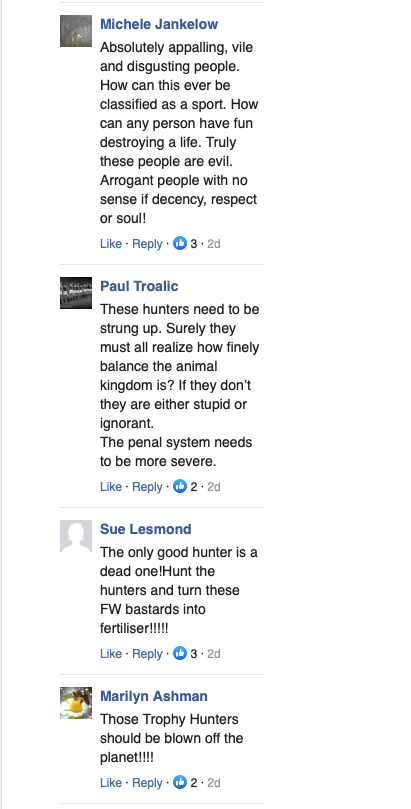
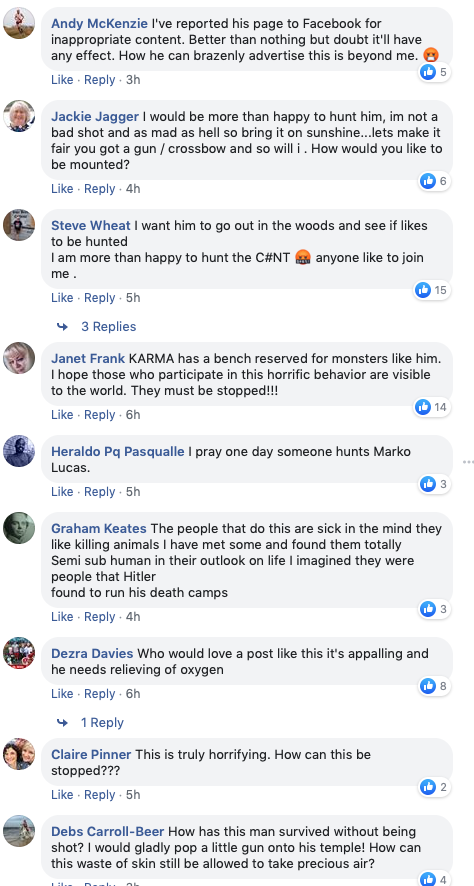
These organisations are extremely well funded and well connected, and gaining traction, even among the hunting fraternity.
We have seen an alarming number of hunting brands and hunters deliberately distance themselves from anything even remotely connected to trophy hunting, as if the word itself denotes evil.
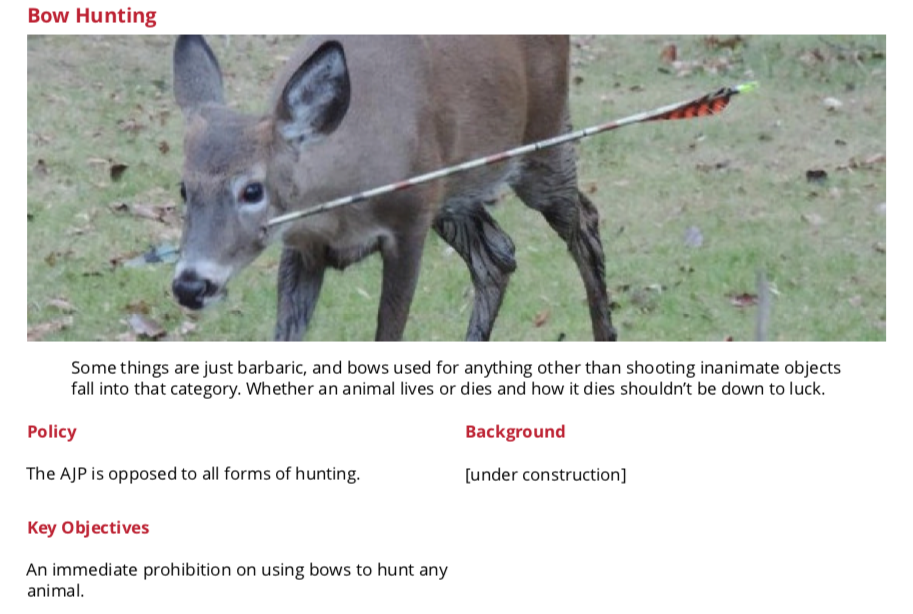
Activists in government
In recent years, a number of political groups have sprung up who want to gain a voice in politics to force regulation changes from within.
The Animal Justice Party is a prime example of this, a party with a clear agenda to not just ban trophy hunting, but to ban anything to do with the human use or consumption of animals.
Just recently, the Animal Justice Party in Victoria pushed through a bill to save the feral cat in Australia. To put this into perspective, feral cats have the potential to kill billions of animals a year, and are directly linked to the extinction of 19 native species in Australia – yet the AJP, in their ultimate wisdom, believes the best solution is to trap, neuter and release this feral pest back into the wild to continue its killing spree!
The AJP have also proposed another bill that would radically change the animal cruelty act, declare all animals as sentient beings and give them the same rights as humans.
This move would not just stop hunting, but would have a dramatic effect on fishing, farming, sports and even pet ownership.
The ultimate goal of organisations like this is to end ALL hunting, fishing, and meat eating, and enforce a plant-based diet. Trophy hunting is just the first step on that agenda.

Going after the girls
Ironically, while the whole world pushes for equal opportunities and female empowerment, there’s an ugly form of misogyny taking root amongst the anti-hunting community with the biggest target being put on female hunters! In fact, some of the most hateful anti-hunting bullying occurs when the trophy hunter in question is female.
Take Tess Talley for instance. Almost two years after a photo of her posing with an allegedly rare and endangered black giraffe went viral, Tess still gets daily death threats and has been the victim of some of the most grotesque hate mail and smear campaigns ever seen online.
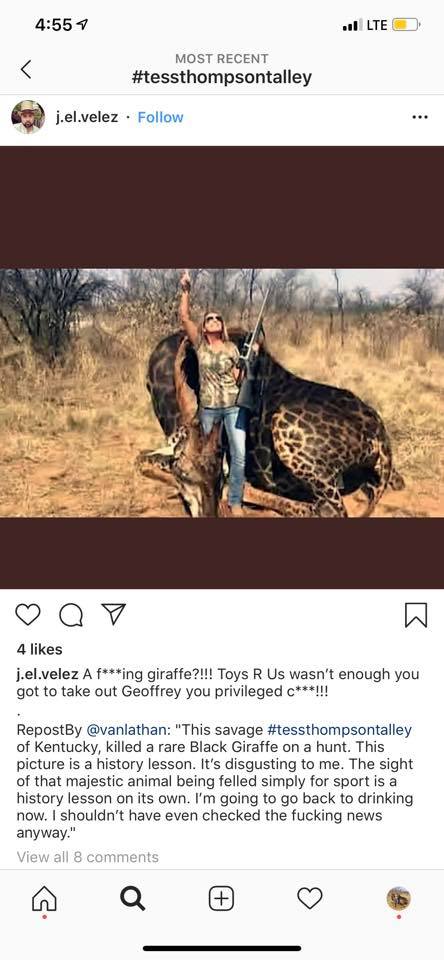
Do hunters kill endangered animals?
So what is the truth? Are the activists right? Are hunters really killing endangered animals, and if so, do they deserve worldwide condemnation?
To find the answer, we need to stop doing what the activists do – responding emotionally about an individual animal or situation. Instead, we need to look at the bigger picture.
Using the example of Tess Talley, much of the furore and anger resulted from two equally mistaken beliefs:
- That all giraffes are endangered (how many times have you read that claim in one of these sensationalist posts).
- That black giraffes are a rare sub-species of an already endangered species.
As usual, the lie is grounded in a modicum of truth. Yes, some giraffe species are endangered in some African countries. In fact, the International Union for Conversation of Nature (IUCN) has listed two sub-species of giraffe on the Red List of critically endangered and threatened species.
But let’s be clear. That’s two sub-species out of a total of nine sub-species of giraffe spread across the whole of Africa.
So when people see a photo of a rich, white American woman smiling over the corpse of a ‘rare’ black giraffe, we understandably see red and think ‘how could she?’.
Unfortunately, most people have jumped to a conclusion, mistakenly believing that ALL giraffes are endangered, and as my mother used to say, when you make an assumption, you make an ass out of you and me (ass_u_me).
Africa is a continent, not a country
The first mistake stems from a lack of general geography skills. Most Westerners forget that Africa is not a country but a continent made up of 54 different countries!
The critically endangered giraffes that the IUCN have listed are located in East, Central and West Africa.
Tess Talley hunted her giraffe in South Africa, where the giraffe population is robust and healthy, thanks in large part to the well-established tourist industry that is centred around those very trophy hunters people love to attack!
Believe it or not, thanks to trophy hunting, South Africa has seen a massive 4000 percent increase in wildlife populations since the 1960s.
Coloration vs separate sub-species
The second mistake was in believing that black giraffes are a separate, rare sub-species of the giraffe family, when in truth, giraffes naturally darken as they get older – kind of like us going grey as we age.
Fake news and click bait
Unfortunately, we live in an era of fake news and clickbait headlines, which is somewhat ironic since we are supposedly at the height of the Information Age.
Instead of researching the truth about the situation and publishing a factual article, we instead end up with hundreds of emotionally charged and factually incorrect articles and posts that stir up a frenzied mob of ignorant, misinformed ‘do-gooders’ – and as we all know, once the bell has been rung, it’s very difficult to unring it with the truth.
We could categorically prove that Tess Talley did not shoot an endangered and rare black giraffe in Africa, and people would still remain convinced that she did.
This problem is often compounded by our limited first-hand knowledge of African wildlife.
For most of us, we have only ever seen giraffes, elephants, lions, zebra and other majestic wildlife on National Geographic documentaries or in zoos. We have no concept of what it is like to live among those animals – yet we want to dictate to African nations how they should manage their wildlife populations.
This has been highlighted in the media recently, with Western nations trying to force Botswana to change its mind about allowing hunting of elephants, despite Botswana having far more elephants than the landscape can sustain.
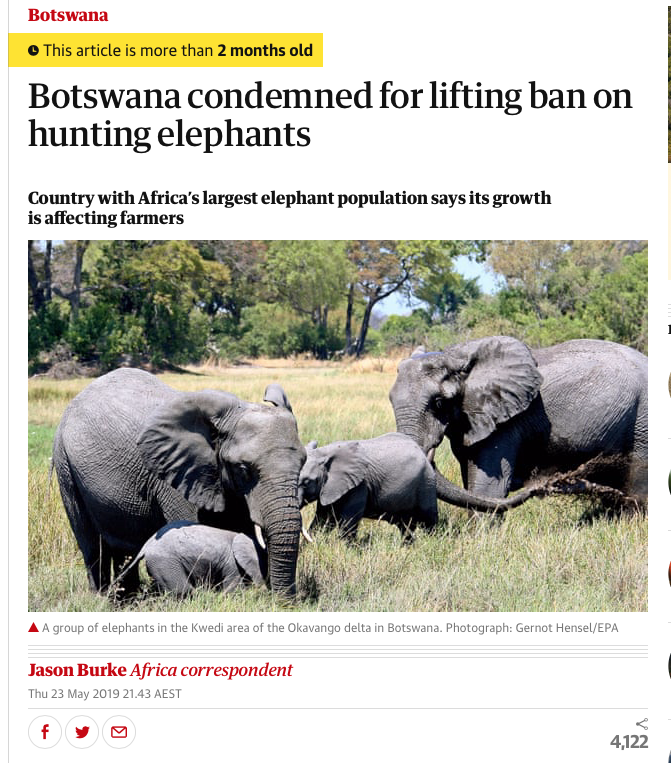
Can you really imagine other countries trying to impose bans on Australia culling native wildlife when we need to, just because they think kangaroos are iconic?
The truth is, one man’s exotic animal is another man’s local pest.
Killing to save animals
Another concept that is really hard for most people to grasp is the fact that killing animals actually helps them.
This idea seems completely paradoxical when viewed in isolation.
How do you save an animal that you just killed?
When viewed in isolation, you can’t save the one animal you just killed. It’s dead.
But when you look at the big picture, and view the kill in context of the greater good, it actually makes sense.
Micro vs macro conservation
This is the difference between a micro vs macro view of conservation. Micro views the individual animal. Macro considers the bigger picture.
In many countries, there is a symbiotic relationship between trophy hunting and conservation.
- In America, the money raised from hunting fees and licenses pays for more than 60 percent of all wildlife conservation.
- In Africa, the money raised from trophy hunting pays for the upkeep of other animal species. For instance, one property that we hunted blue wildebeest on used the fees raised from hunting plains game animals to pay for a breeding program for endangered rhinoceros.
- In Pakistan, a UN-funded project has helped the locals set up a trophy hunting system that has brought the endangered markhor back from the brink of extinction. The program means the locals now have an incentive to protect the goat instead of killing it for meat or to protect their crops.
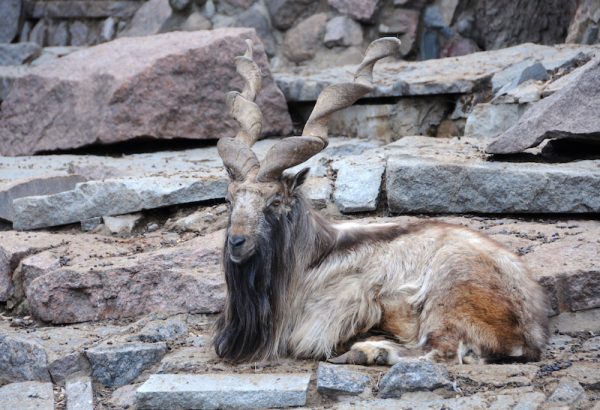
Let’s be clear here. The vast majority of trophy hunting in Africa, particularly South Africa, is for plains game and antelope species that are in huge abundance.
Since 1960, wildlife populations have grown from 575,000 to more than 24 million!
A tiny fraction of hunting in Africa involves iconic big game species like lion, giraffe, elephant, leopard, rhinoceros and other animals that could be considered threatened and endangered – at least in some places – but even that is convoluted and muddied by the sheer size of the African continent.
Take elephants for instance.
In some parts of Africa, elephant populations are severely threatened, and the two biggest threats to elephants are human encroachment on their habitat, and illegal poaching (hunting and poaching are completely different and should never be used interchangeably).
But while they are threatened in some countries, they are not threatened in all countries. In fact, there are some African countries that have an overabundance of elephants, and urgently require their elephant populations to be culled.
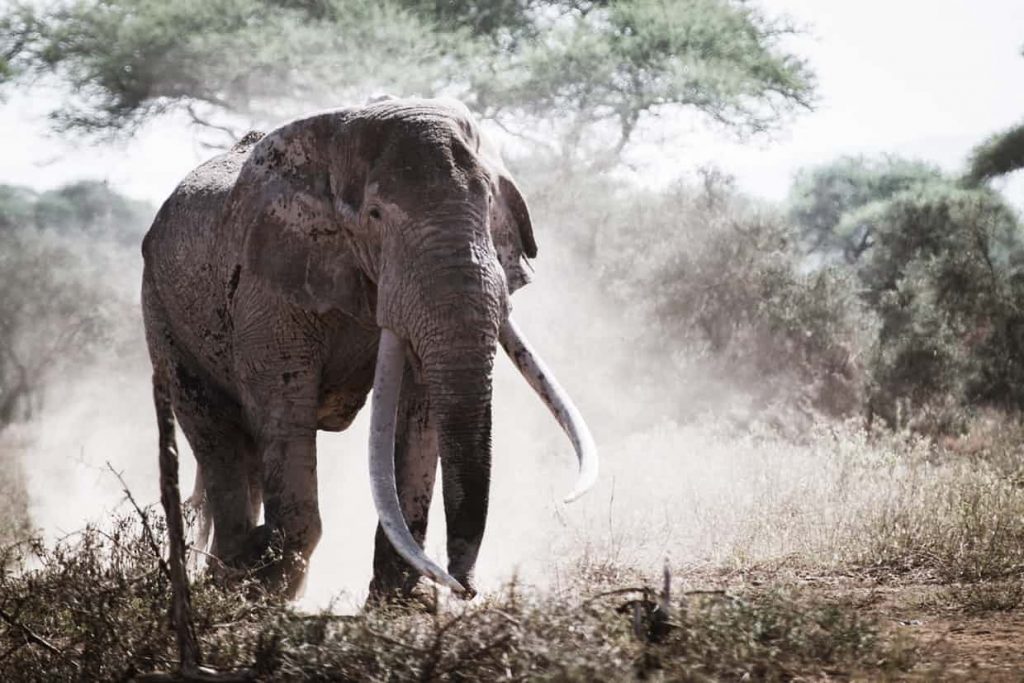
This is where things get really convoluted.
A trophy hunter shooting an elephant in South Africa, Botswana, Namibia or Zimbabwe is not hunting an endangered animal but engaging in a legal and ethical hunt.
In Botswana and South Africa, where elephant populations are too high and causing massive problems, that trophy hunter would actually be helping solve a problem for those countries and locals.
Yet that same trophy hunter could travel to another country in Africa and shoot the exact same species of elephant and the hunt would be considered either illegal or, at the very least, unethical, because locally elephants are considered under threat.
But even that depends on the individual situation and circumstances surrounding the hunt.
The hunter may have been asked to kill an elephant that has gone rogue and is causing damage to local villages. Or the government may need to remove a small number of older bull elephants to allow the younger males to breed – in which case that hunter is doing nothing wrong and is actually providing a valuable service.
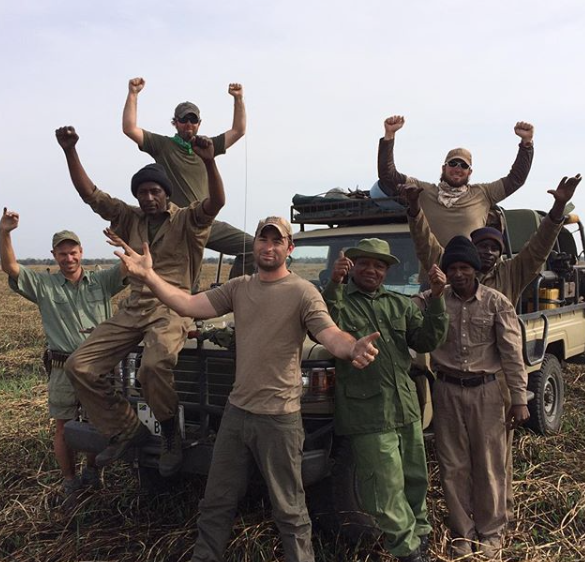
Shooting a rare black rhino
Remember a few years back, when Corey Knowlton, a well-known trophy hunter from the US, paid $350,000 to hunt an endangered black rhinoceros in Namibia?
Knowlton received huge media backlash and the usual barrage of death threats and hate mail from people who immediately jumped to the wrong conclusion – that he was just another rich guy trying to make himself feel more masculine by shooting rare animals.
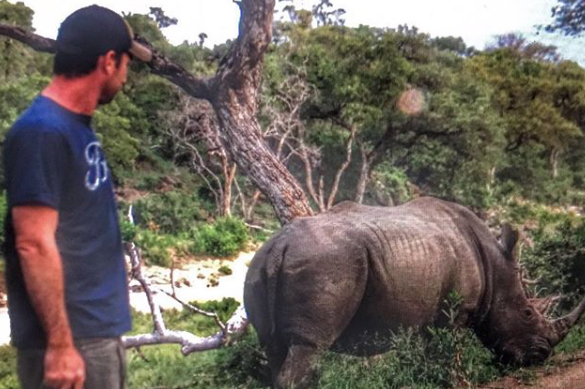
And, of course, when you see all those words strung together in a headline on social media, you can almost understand the outrage it caused.
You have to dig a little deeper to learn the truth about his hunt.
A rhinoceros breeder in Namibia had an older male rhino that had become a problem animal. He was no longer contributing to the gene pool and was actually killing the younger males that were part of the breeding program.
The rhino had become an expensive problem that needed to be solved.
One death saves many
Sure, the owner could have simply euthanised the animal, but that would have just incurred a cost and given nothing back to the other animals. Instead, the owner spoke to the government, negotiated the release of a single hunting tag, and sold that hunt at auction for a significant sum of money.
Corey Knowlton was the successful bidder for that hunt.
Now, it’s easy to see some evil motivation in his act – paying an obscene sum of money to kill an animal ‘for fun’.
But Knowlton, like many hunters, understood that the money raised from that hunt would go directly back into the breeding program, renew the bloodlines of the herd, and ensure that the important conservation work could continue for many more years.
One animal died so many more could live.
There are many animal activists that reject the fact that hunting saves animal lives. They are not just rejecting hunters’ opinions but scientific data from leading conservation scientists.
There is no science that backs up a hunting ban. All they rely on is emotional opinions, and, at the end of the day, opinions don’t pay for conservation.
If animal activists truly want to be the voice of change, they need to replace the funding that hunting provides for conservation programs. That means putting their hand into their own pockets to come up with a viable alternative: one that not only covers the billions raised through regulated trophy hunting, but that provides the level of employment and community services currently provided by hunting programs.
So far, all we have seen from activists groups is a never-ending cycle of donations fuelling advertising and PR to generate more donations that go back into marketing campaigns. Very little money flows back to the wildlife or local communities.
Useful resources:
Learn more about the giraffes that really are endangered, and how to help them – https://www.bornfree.org.uk/news/giraffe-critically-endangered
Learn more about the IUCN Red List of Threatened Animals – https://www.iucnredlist.org
Learn more about South Africa’s giraffe populations – https://www.getaway.co.za/environment/conservation-environment/south-african-giraffes-moved-to-malaw-reserve/
Learn more about how giraffes darken as they age – https://www.livescience.com/19686-aging-male-giraffes-black-spots.html
Learn more about how the hunting industry in South Africa has helped increase wildlife populations – https://www.iamhunter.net/into-the-wild/advocate/how-can-killing-animals-save-them/
Learn how ending trophy hunting could be much worse for endangered species – https://edition.cnn.com/2017/11/24/opinions/trophy-hunting-decline-of-species-opinion-dickman/index.html
Learn more about the North American conservation model that has been used to help vulnerable wildlife – https://www.iamhunter.net/into-the-wild/advocate/what-can-australia-learn-from-the-north-american-wildlife-model/
Learn more about the Pakistani trophy hunting program helping endangered markhor – https://www.iamhunter.net/into-the-wild/advocate/how-hunting-is-saving-the-markhor-in-pakistan-conservation-in-action/
Learn more about whether elephants are endangered or not – https://www.nrdc.org/stories/status-check-african-elephants
Read the full story about Corey Knowlton’s rhinoceros hunt and the positive benefit it played in conservation – https://edition.cnn.com/2015/05/19/africa/namibia-rhino-hunt/index.html
What is I Am Hunter?
I Am Hunter wants to change the way hunting is perceived and to change the conversation from a negative one driven by anti-hunters to a positive one led by hunters.
Our goal is to help hunters become positive role models and ambassadors for hunting, while simultaneously helping non-hunters understand why hunting is important.
You can become a supporter and help us achieve our goal and spread a positive message about hunting with the wider community.
Related content
Our other channels
Get our newsletter
Get our free monthly newsletter direct to your inbox
Listen on iTunes
Listen to our podcast on iTunes.
TV series
Watch I Am Hunter episodes on My Outdoor TV (MOTV)




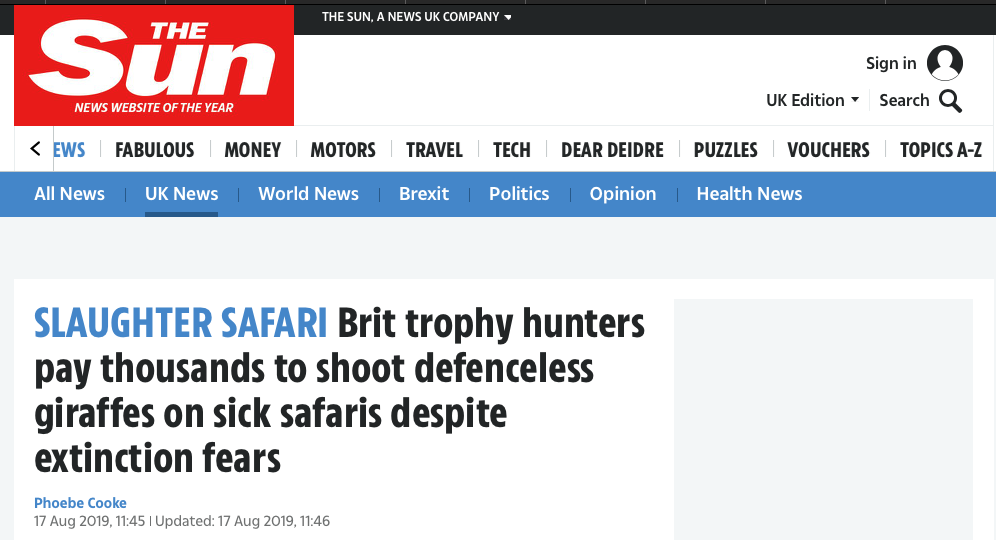

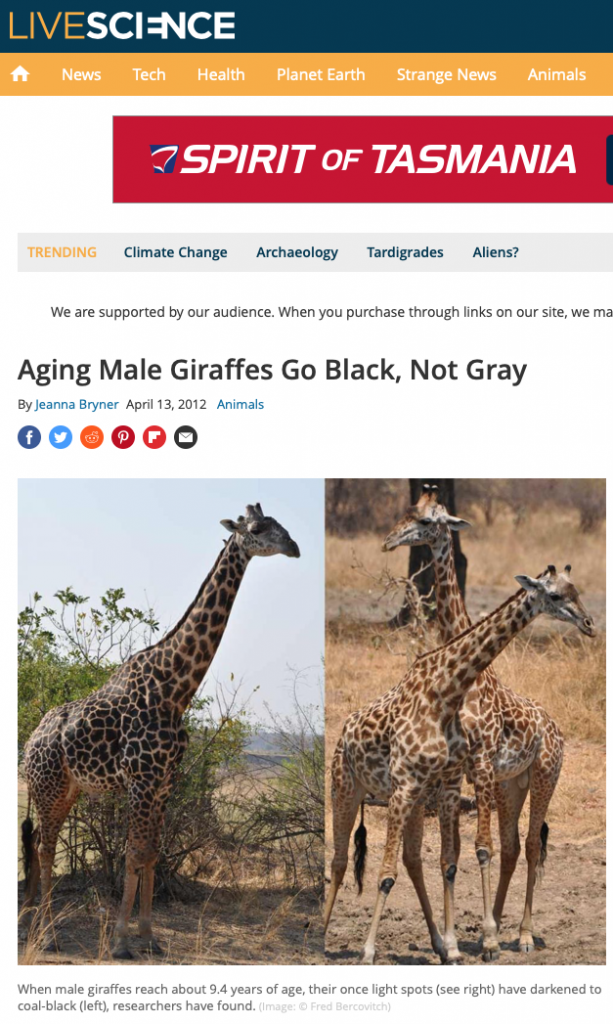

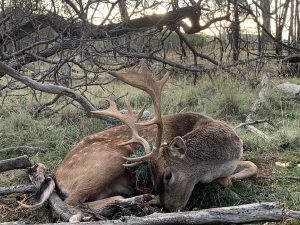
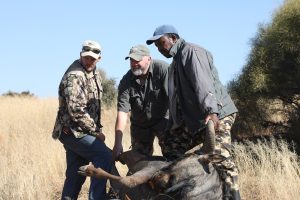
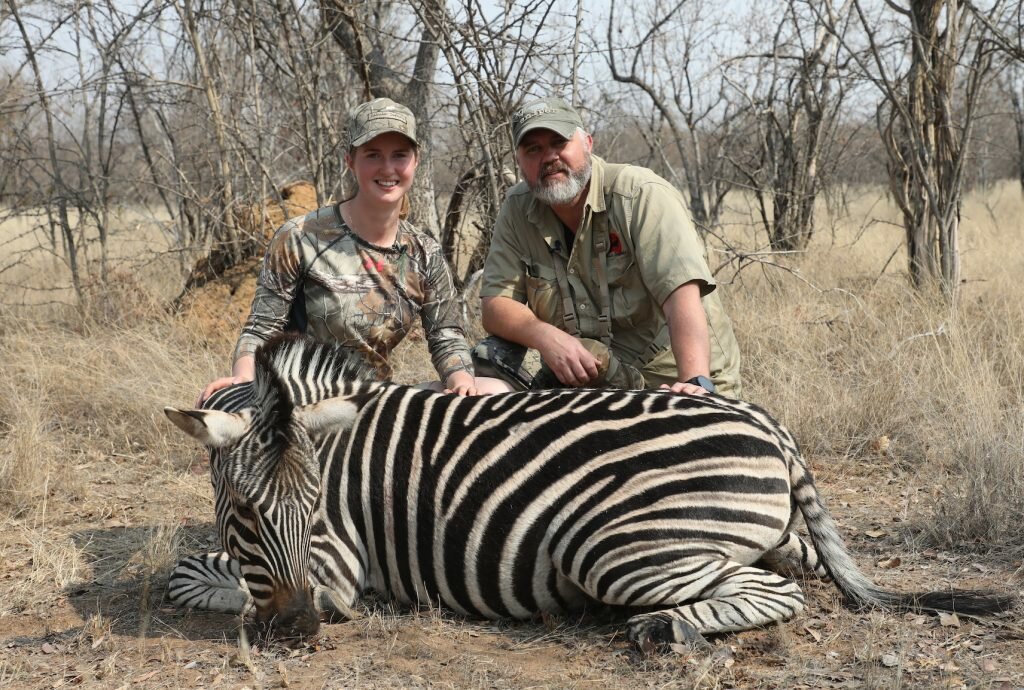
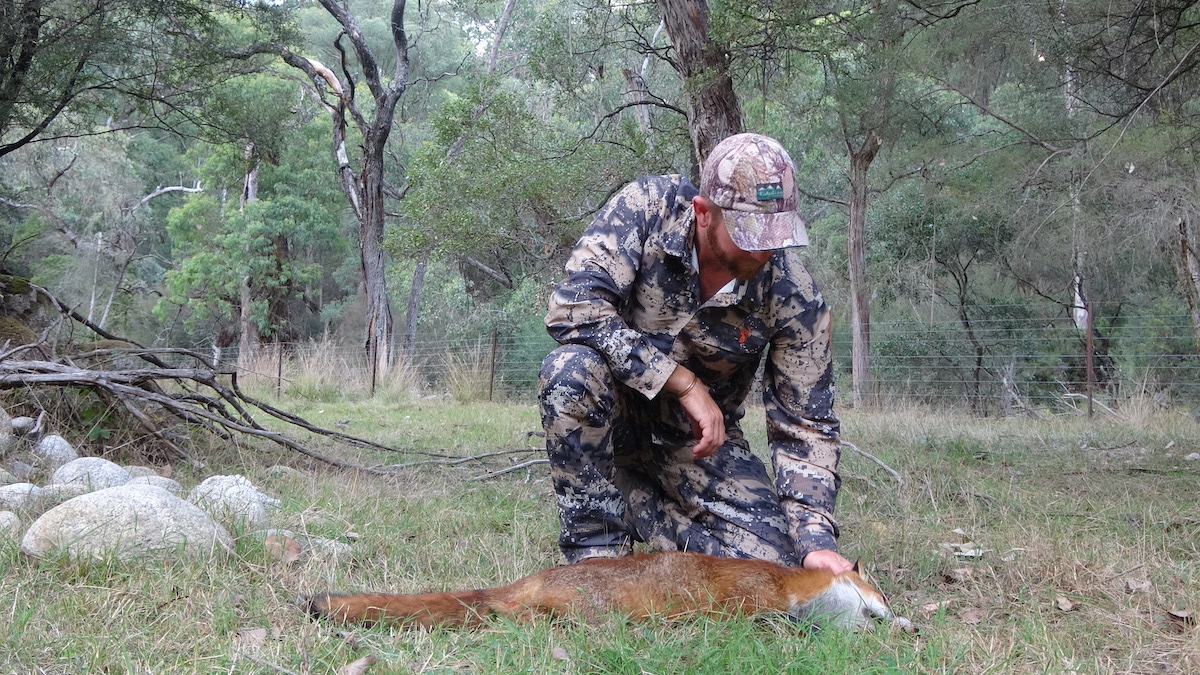
6 thoughts on “Do trophy hunters kill endangered animals?”